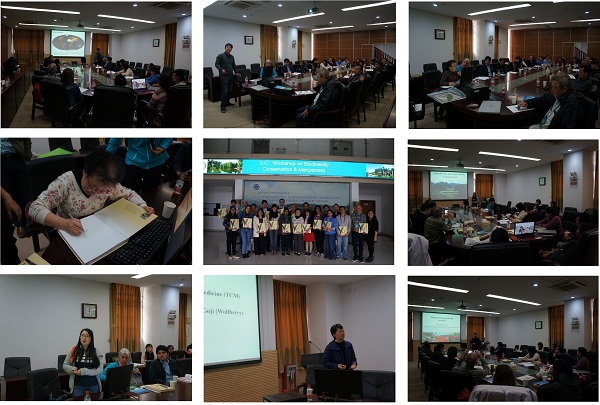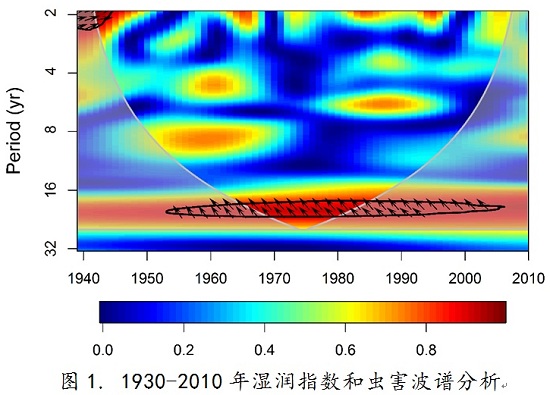News
-
2018-02-11Genomic signature of adaptive divergence despite strong non-adaptive forces on edaphic islands: a case study of Primulina juliaeBoth genetic drift and divergent selection are expected to be strong evolutionary forces driving population differentiation on edaphic habitat islands .Populations with the lowest genetic variation were most genetically differentiated from other populations and the extent of genetic drift increased with geographic distance from other populations...Read More
Both genetic drift and divergent selection are expected to be strong evolutionary forces driving population differentiation on edaphic habitat islands. However, the relative contribution of genetic drift and divergent selection to population divergence has rarely been tested simultaneously. In this study, RAD-based population genomic analys... -
2018-02-05Evolutionary transitions from distyly to homostyly: the ecological correlates and genetic consequencesHeterostyly is an adaptation found in numerous families that enables outbreeding in dioecious flowers , complementing self-incompatibility mechanisms .Identifying the environmental conditions favouring transitions to selfing and determining their population genetic consequences can provide insights into how often and why selfing evolves in heter... Heterostyly is an adaptation found in numerous families that enables outbreeding in dioecious flowers, complementing self-incompatibility mechanisms. However, an evolutionary transition to homostyly with high levels of self-fertilization is frequently seen, with consequences for the genetic structure, evolution and adaptation of the species. The...Read More
-
2018-01-10Exogenous nitrogen addition reduced the temperature sensitivity of microbial respiration without altering the microbial community compositionAtmospheric nitrogen ( N ) deposition is changing in both load quantity and chemical composition .The consistent N effects for the surface and subsurface soils suggest that the effects of N on soil microbial communities may be independent of soil chemical contents and stoichiometry .Fig . The temperature sensitivity ( Q10 ) of soil CO2 emission ...Read More
Atmospheric nitrogen (N) deposition is changing in both load quantity and chemical composition. The load effects have been studied extensively, whereas the composition effects remain poorly understood. We conducted a microcosm experiment to study how N chemistry affected the soil microbial community composition characterized by phospholipid... -
2018-01-04The Fifth Workshop on Biodiversity Conservation & Management successfully organized in SCBG, CASThe Fifth Workshop on Biodiversity Conservation & Management from Nov . 13 - Nov . 27 , 2017 Sponsored by Bureau of International Co-operation , Chinese Academy of Sciences was successfully organized in South China Botanical Garden ( SCBG ) .Nineteen Participants from Argentina , Brazil , Bolivia , Peru , Ecuador , Malaysia , Sri Lanka and Vietn...Read More
The Fifth Workshop on Biodiversity Conservation & Management from Nov.13-Nov.27, 2017 Sponsored by Bureau of International Co-operation, Chinese Academy of Sciences was successfully organized in South China Botanical Garden (SCBG), Chinese Academy of Sciences (CAS). Nineteen Participants from Argentina, Brazil, Bolivia, Peru, Ecuador, Malay... -
2017-12-21Effect of climate and competition on radial growth of Pinus massoniana and Schima superba in China’s subtropical monsoon mixed forestTree growth is affected by many exogenous and endogenous factors , especially climate and competition .Dendroclimatology combined with competition analysis was used to examine the radial growth response of two major species - Pinus massoniana and Schima superba in subtropical monsoon mixed forests in southern China . Growth-climate relationship ...Read More
Tree growth is affected by many exogenous and endogenous factors, especially climate and competition. To address the issue of how these factors influence tree growth under global warming, dendroclimatology combined with competition analysis was used to examine the radial growth response of two major species - Pinus massoniana and Schima sup... -
2017-11-29New progress was made in the study of species diversity and co-occurrence network of soil microbes in the south subtropical forestPrecipitation regime change presents serious ecological consequences in diverse ecosystems , particularly forests .The richness and abundance of Sordariomycetes were reduced , while the abundance of ectomycorrhizal fungi was elevated by MAPS . The co-occurrence network of fungal OTUs ( fungal network ) was also changed more than the bacterial ne... Precipitation regime change presents serious ecological consequences in diverse ecosystems, particularly forests. Soil microorganisms can have great feedback to the carbon stock of subtropical forest, but the sensitivity of microbial community in multiple aspects to the precipitation change is still not sufficiently understood.Read More
Relying on th... -
2017-11-27The mechanism behind forest decline and death in the northern hemisphere recently being clarifiedInsects , diseases , fire and drought and other disturbances associated with global climate change contribute to forest decline and mortality in many parts of the world .Forest decline and mortality related to drought or insect outbreaks have been observed in North American aspen forests .In addition , data suggest that insect outbreaks could be... Insects, diseases, fire and drought and other disturbances associated with global climate change contribute to forest decline and mortality in many parts of the world. Forest decline and mortality related to drought or insect outbreaks have been observed in North American aspen forests. However, little research has been done to partition and est...Read More
-
2017-11-20Responses of Tree Transpiration and Growth to Seasonal Rainfall Redistribution in a Subtropical Evergreen Broad-Leaved ForestPrecipitation changes such as more frequent drought and altered precipitation seasonality may impose substantial impacts on the structure and functioning of forest ecosystems .Three precipitation treatments were administered including a drier dry season and wetter wet season treatment ( DD ) , an extended dry season and wetter wet season treatme...Read More
Precipitation changes such as more frequent drought and altered precipitation seasonality may impose substantial impacts on the structure and functioning of forest ecosystems. A better understanding of tree responses to precipitation changes can provide fundamental information for the conservation and management of forests under future clim...

